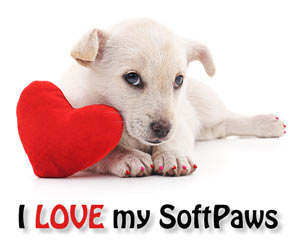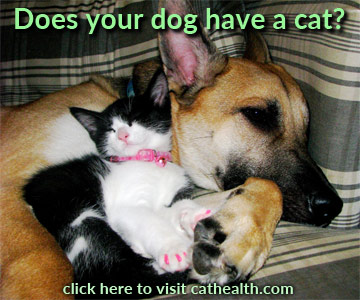How to Greet a New Dog

Maybe you're on your evening walk when you see someone coming toward you, walking an irresistibly adorable dog. Or perhaps you've gone to visit some friends and learned that they've adopted a new shelter dog since you saw them last. You love dogs, and you just want to say hello and give out some snuggles. But did you know that there are right and wrong ways to approach a new dog?
Dogs Have Different Social Rules Than Humans
The first thing to know about greeting a new dog is that canines don't use the same social behaviors as people. While most dogs will forgive many faux pas that humans commit against them, some dogs aren't as easygoing. That's why it's important to know how dogs might interpret some of the actions that seem reasonable to a human who is trying to introduce themselves.
For instance, most humans have an inborn culturally-acceptable distance that they leave between themselves and a person they don't know. Think about how uncomfortable you have been when a stranger has stepped inside that invisible circle, too close to you for comfort.
Dogs have similar inborn ways that they interact with one another, and they're different from how humans act toward each other. One example is that dogs rarely approach one another head-on unless they are in conflict. This isn't readily understandable by most humans, who do generally advance toward one another head-on and interact face-to-face.
So when you're approaching a new dog, it's important to leave your human social skills behind and adopt more canine friendly ones.
Do's and Don'ts for Approaching a New Dog
Here are the most important things to keep in mind when you are greeting a dog that you don't know.
- Don't make direct eye contact with the dog. Looking a dog straight in the eyes can be taken as a challenge. While it won't bother many laid-back dogs, if you encounter one that isn't so lax about canine manners, you might find yourself looking into a pretty intense gaze with a snarl to back it up.
- Do address the dog's human first. When you see a new dog, you should ignore him and speak with the accompanying human first. Talking to the dog's owner allows the dog to see that his person is OK with you, and that may be enough to relax him. Additionally, you should ask the human whether it's OK to approach their dog. That way, the person can let you know if their dog's personality isn't conducive to being greeted by a stranger or if they are sick or have some other reason why they shouldn't be approached.
- Don't approach the new dog from the front. As discussed above, approaching a dog head-on can be seen as a challenge. It's best to approach an unknown dog from the side.
- Don't bend over the dog. This is another item on the list that highlights the difference between human and canine social norms. Humans, like other primates, love to give and receive hugs and handshakes. It's common for us to want to bend over a dog's head to pet him. However, in canine communication, one dog looming over or placing a paw upon the shoulders or head of another indicates dominance and correction. This is another instance where many dogs overlook humans' poor manners but not all of them will. Some will see this behavior as threatening and react accordingly by snarling, snapping, or biting. And, whatever you do, never attempt to hug or kiss a dog that you don't know well.
- Do allow the dog to approach you first. When you move toward a new dog, do so slowly. This allows the dog time to judge how he feels about you and gives you a chance to observe his body language, too. It's best to stop before you reach the dog and allow him to make the final approach if he wants to. If he stays put and doesn't move toward you, respect that and leave him alone.
- Do observe the dog's body language. Keep an eye on what the dog is communicating to you through body language. Stiff muscles, ears laid back, quietly rigid tail, intently staring eyes, and lifted lips all indicate that the dog is not happy to see you. Don't approach a new dog if he is displaying any of these behaviors.
- Do offer your closed fist for the dog to smell if he seems friendly. Once you determine that the dog's body language is positive and he seems interested in meeting you, extend your closed fist to him with the palm down to sniff if he wants to. If he does so and seems relaxed, interested, and friendly, you can pet him, but don't rush it. Let him finish sniffing and give you some sign that he's done, such as nudging your hand a little with his nose, wagging his tail and looking at you, or moving closer.
- Don't pet the dog's head or rear end. Touching these areas of the dog's body may feel threatening to him if he doesn't know you well. Instead, pet his shoulder (the one closest to you; don't reach over him), chest, and neck.
- Do allow the dog to decide when your interaction should be over. If he moves away from you, let him go without following. He'll come back if he wants to visit some more, but if he's trying to tell you that he's done and you essentially chase him down, he could view that as a threat.
Following these simple do's and don'ts of approaching a new dog can help keep you safe, preserve the dog's comfort, and set the two of you up for a good relationship in the future. After all, manners are important; dogs just have different ones than we do.
You May Also Like These Articles:
Why Do Dogs Tilt Their Heads When You Talk?
Dogs Make the Best Matchmakers
Disclaimer: This website is not intended to replace professional consultation, diagnosis, or treatment by a licensed veterinarian. If you require any veterinary related advice, contact your veterinarian promptly. Information at DogHealth.com is exclusively of a general reference nature. Do not disregard veterinary advice or delay treatment as a result of accessing information at this site. Just Answer is an external service not affiliated with DogHealth.com.
Notice: Ask-a-Vet is an affiliated service for those who wish to speak with a veterinary professional about their pet's specific condition. Initially, a bot will ask questions to determine the general nature of your concern. Then, you will be transferred to a human. There is a charge for the service if you choose to connect to a veterinarian. Ask-a-Vet is not manned by the staff or owners of DogHealth.com, and the advice given should not delay or replace a visit to your veterinarian.



